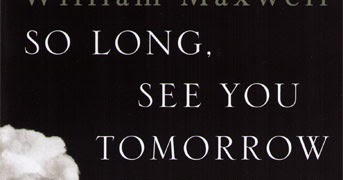


A dark treasure, which appeared in its entirety in The New Yorker.Access-restricted-item true Addeddate 18:39:52 Autocrop_version 0.0.13_books-20220331-0.2 Bookplateleaf 0004 Boxid IA40533005 Camera USB PTP Class Camera Collection_set printdisabled External-identifier

in the face of deprivation so great, what is the use of asking him to go on being the boy he was?"" In Maxwell's thoroughbred prose, this is a fiery plunge into the agonies of loss at the time when life should be accruing-and it's perfectly set against a sepia-print rural tragedy in which Fate is as abrupt and mindless as a sleet storm on newly sprouted fields. But always at the heart of doom is Cletus, whose Edenic life of adolescent certainties and small epiphanies flips by in ""quarter-hours"" and then is smashed: ""Take all this away. These four begin to move with a kind of deadly lethargy toward disaster while hapless kinfolk swirl around.

And the principal players in the murder tragedy slowly come to life: Clarence Smith and his wife Fern (""who expected more of life than was reasonable"") Lloyd Wilson, whose inexplicable passion for Fern creates the first break in his unrealized life and Wilson's bitter wife Marie. So the narrator mingles the corrosive images of his own boyhood grief with imagined fragments from the devastation of the life of Cletus Smith-the farm boy whose dog waited for him to come home from school, who felt the pride of ownership even though his father was a tenant on the land, who loved the affectionate strength of neighbor Mr. Both boys, uncommunicative but easy companions before the murder, were victims of terrible chance-the narrator's mother had died of pneumonia in 1918. But the narrator, from a distance of years, focuses on his own boyhood friend-13-year-old Cletus Smith, the murderer's oldest son. The story begins with a spare report of the murder, in 1921 rural Illinois, of tenant farmer Lloyd Wilson by his neighbor and onetime best friend, Clarence Smith, who then killed himself. From a writer of modest output (since 1934) and major accomplishment: a wellnigh faultless, lacerating, and heartbreaking short novel.


 0 kommentar(er)
0 kommentar(er)
